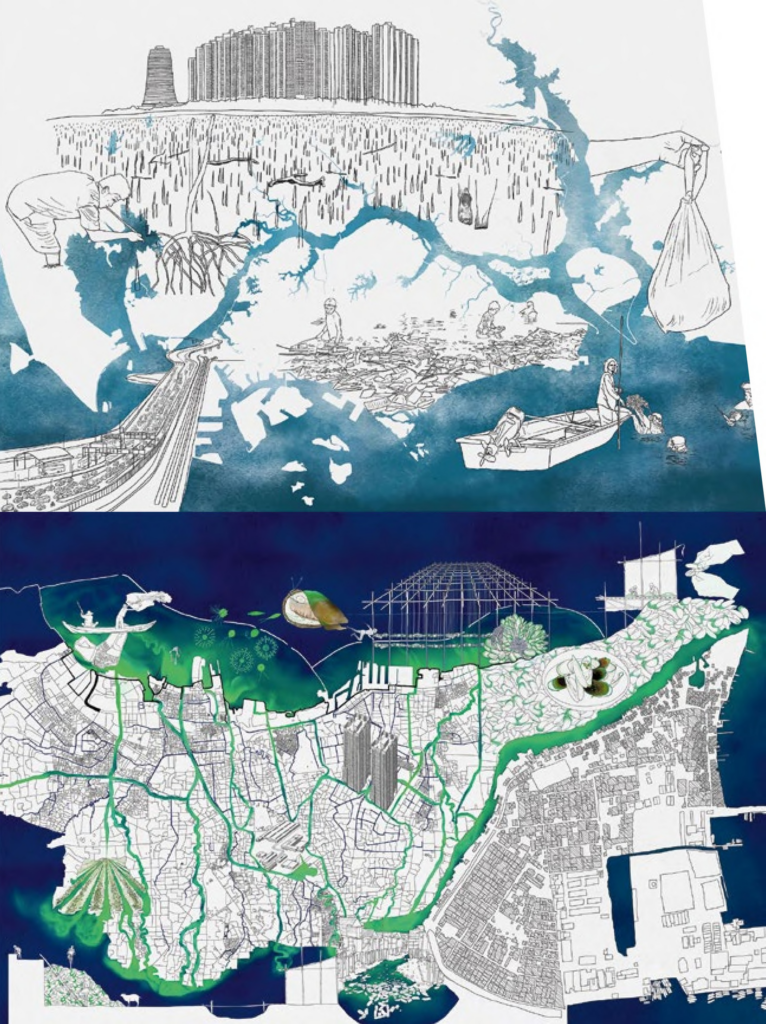Born in 1992 in Jiangsu, China, lives and works between Jiangsu, China, and New York, United States
Before there was land, there were mangroves
2024
Feifei Zhou is an architect, artist, and researcher. Her work explores the cultural and ecological impact of the built and natural environment. Using narrative-based spatial analysis, she collaborates intensively with social scientists to translate empirical observations and scientific research into visual representations that aim to both clarify intricate more-than-human relations and open up new questions. Zhou has a master’s degree in architecture from the Royal College of Art, London. She has lectured at international institutions including the Prada Frame: On Forest, the University of Copenhagen, ETH Zurich, Columbia University, the Cooper Union, and Cornell University. As a guest researcher at Aarhus University Research on the Anthropocene (AURA), she co-edited Feral Atlas: The More-than-Human Anthropocene (Stanford University Press, 2020). Zhou has published in various international journals and platforms, and her work has been included in international exhibitions and biennials.
Before there was land, there were mangroves (2024) is a long-term, collaborative research undertaking that investigates land reclamation and the intricate ecological, biophysical, and social structures caused by coastal “hardening.” Land reclamation is a prevalent phenomenon across coastal regions around the globe. From Singapore and Shanghai to Dammam, miraculous transformations of sparse fishing villages into metropolises are made possible by extensive reclamation that turn porous ocean ecosystems into land. But before there was land, there were mangroves. Mangrove forests exemplify the amphibious coastlines of the Indian Ocean, nurturing a rich range of sea and land creatures including fish, crabs, birds, and shrimp. Critically, their salt-tolerant trunks and roots enable an ever-changing land-water interface, creating a porous environment as a natural barrier for flood protection and tidal impact. While reclaimed land offers opportunities for coastal resettlement and urban development, it does so at the expense of drastically altering and displacing existing ecosystems and multispecies livelihoods. Filled by hard material such as rocks and cement mixed with sand or clay, reclaimed land is often enclosed with concrete for more stability, eliminating porosity and resulting in more severe flooding and biodiversity degradation. These are some of the most pressing battles for coastal communities around the world, pushing us to question and reimagine other kinds of coastal more-than-human relationships.



